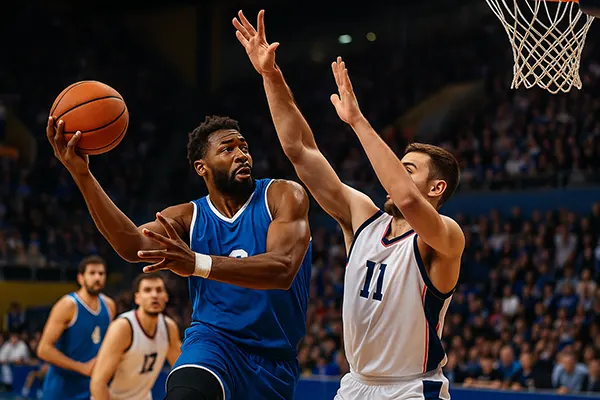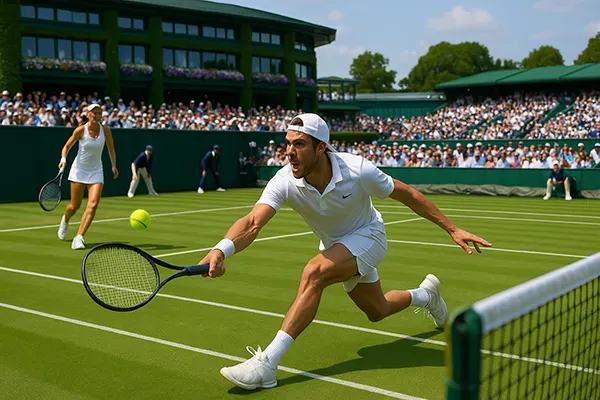While the NBA continues to dominate the global basketball narrative, Europe’s basketball ecosystem has matured into a robust, competitive force in its own right. With improved infrastructure, growing budgets, and rising talent retention, leagues like the EuroLeague, Spain’s ACB, and Germany’s BBL are attracting increasing attention. The question now stands: are European basketball leagues truly becoming worthy rivals to the NBA?
Structure and Evolution of European Leagues
European basketball is structured quite differently from the NBA. While the NBA functions as a closed league, most European systems operate on a promotion and relegation basis. The top-tier EuroLeague features elite clubs from across the continent, many of which qualify through their national competitions like Spain’s Liga ACB or Turkey’s BSL. These domestic leagues are essential pipelines for talent and revenue.
Budgets in Europe are growing, especially among top-tier clubs like Real Madrid, Fenerbahçe, and AS Monaco. For instance, Real Madrid’s basketball section operated with a €44 million budget in 2024—approaching the lower tier of NBA team expenses. Meanwhile, increased investment in facilities and youth academies has created better development environments and increased club sustainability.
Player transfers in European leagues are more dynamic and club-driven compared to the NBA’s draft system. Teams can buy and sell players freely, with buy-out clauses and mid-season moves being common. This leads to intense seasonal turnover and strategic squad-building across the continent.
Media Rights and Financial Independence
European leagues have also significantly boosted their revenue through broadcasting deals. EuroLeague’s television rights generated over €60 million in revenue during the 2023–24 season, with steady year-on-year growth. Spain’s ACB also inked renewed contracts with Movistar+ and international platforms like DAZN, making Spanish basketball more accessible than ever.
Many clubs have attracted corporate sponsorships—Alba Berlin’s deal with Deutsche Telekom and Anadolu Efes’ long-term tie with its brewery parent company stand as notable examples. These partnerships ensure financial independence and encourage reinvestment into training, scouting, and fan engagement strategies.
Moreover, digital streaming is allowing clubs to tap into international audiences. EuroLeague TV, for example, streams matches globally, drawing significant attention from North American fans eager to follow former NBA players or top prospects. This cross-market synergy enhances league visibility and commercial viability.
Why NBA Players Are Returning to Europe
The trend of former NBA players joining European clubs is not new, but it has gained momentum. Athletes like Kemba Walker (Monaco), Kendrick Nunn (Panathinaikos), and Willy Hernangómez (Barcelona) have recently signed in Europe for better playing time, competitive roles, and financial stability.
European clubs offer ex-NBA stars more prominent on-court responsibilities and leadership roles. In contrast, many of these players faced limited minutes or bench positions in the NBA. This change often revitalises careers, as seen with players like Mike James, who transformed from an NBA journeyman into EuroLeague MVP material with Monaco.
Financially, European contracts are becoming more lucrative. Though not matching the top NBA salaries, tax advantages in countries like Spain and Greece can make net income competitive. Additionally, the shorter season and reduced travel demands are appealing for veteran players looking to extend their careers.
Player Development and Competitive Edge
European clubs are also focusing heavily on player development. Institutions such as Žalgiris Kaunas and Partizan Belgrade run elite academies where young athletes receive comprehensive training in both sport and education. This fosters technical growth, game IQ, and adaptability.
Such systems have been pivotal in producing NBA-calibre talent. Luka Dončić (Real Madrid), Nikola Jokić (Mega Basket), and Giannis Antetokounmpo (Filathlitikos) all rose through European programmes before excelling in the NBA. These stories validate the credibility of European basketball’s development structure.
European leagues also provide meaningful competitive experiences through domestic championships, EuroLeague clashes, and FIBA tournaments. Unlike the NBA’s lengthy regular season, European competitions often feature higher-stakes games throughout the calendar year, pushing players to perform under pressure regularly.

Is Europe a True Rival or Complementary Force?
While Europe may not yet rival the NBA in terms of revenue, scale, or global marketing reach, it offers an alternative ecosystem that’s gaining prestige. Rather than being a “lesser” league, Europe is increasingly viewed as a parallel, more strategic route for players, coaches, and executives alike.
The EuroLeague’s ambition to become a permanent fixture in the global sports calendar is taking shape through collaborative events with the NBA, such as pre-season friendlies and shared youth development camps. This hints at mutual recognition and opens doors for future cross-league cooperation rather than direct competition.
For fans, this dual-track system is ideal: the NBA offers elite entertainment and showmanship, while European basketball delivers tactical depth, regional pride, and grassroots accessibility. Together, they serve the full spectrum of global basketball lovers.
Future Outlook and Opportunities
As of February 2025, ongoing discussions around potential EuroLeague expansion, improved infrastructure in countries like Germany and France, and increased FIBA involvement suggest steady growth. FIBA’s Intercontinental Cup and Champions League continue to offer additional international exposure for non-EuroLeague teams.
The success of European clubs in developing homegrown talent and retaining veteran stars points to a sustainable model. Moreover, increasing media rights, streaming access, and merchandising indicate strong upward commercial trends.
If European leagues continue to evolve strategically—with careful balance between financial ambition and cultural authenticity—they may not just complement the NBA but emerge as an influential pillar in global basketball’s future architecture.




